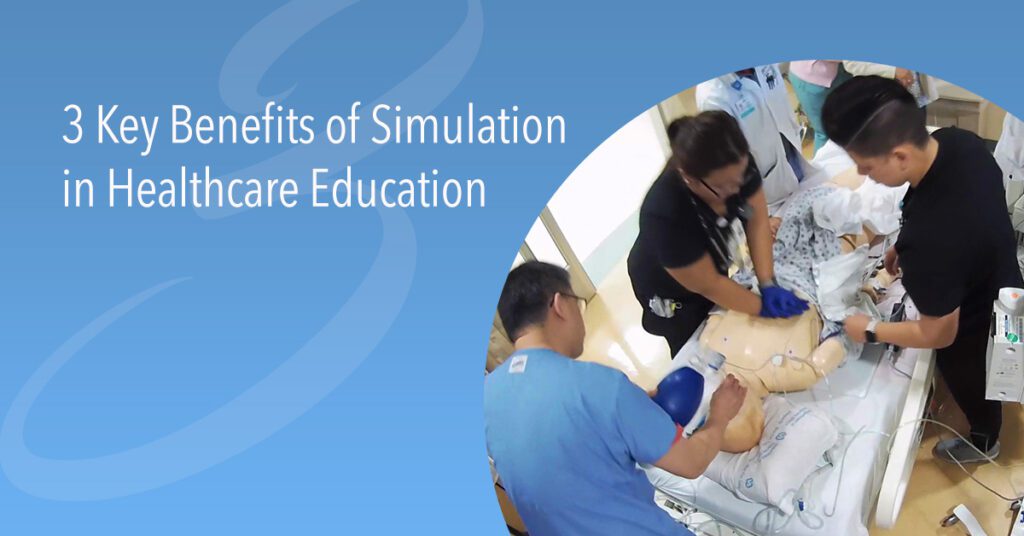With an increased focus on aligning outcomes with academic competencies in medical education programs, medical simulation has quickly become one of the most effective instructional methods for healthcare educators. Many different types of medical simulation are now routinely used in healthcare curricula as an effective way of applying acquired knowledge for both clinical scenarios and skills-based training.
But why has this instructional technique become so widespread, and what are the most tangible benefits of using simulation training in healthcare?
1. Simulation in Healthcare Helps Learners Apply Knowledge Through Practice
While didactic methods of learning give healthcare students the breadth of knowledge required to advance in their studies, there are limited opportunities for them to apply this hard-earned wisdom first-hand. Shortened clinical rotations and patient safety concerns limit the amount of real-world experience medical and nursing students encounter before they’re thrust into live care situations.
Simulation in healthcare education allows students to employ what they’ve learned in the classroom in a safe, lower-stakes environment. Whether they’re practicing their clinical reasoning with standardized patients (SPs) in a large-scale simulation center or getting multiple repetitions of specific skills on a high-definition manikin, students can log the hours necessary to translate their acquired knowledge into actionable care without risk.
2. The Collection and Use of Data to Improve Healthcare Simulation
The connection between assessment and simulation in healthcare training isn’t as obvious as traditional didactic methods, but its proper utilization in healthcare simulation can lead to informative insights for both instructors and learners.
Data gathered from live annotations from debrief sessions, embedded assessment tools, and live feedback from manikins can all be tracked and analyzed to not only pinpoint learning and competency gaps for individual students but also reveal curriculum gaps that faculty can address. This increase in information accessibility helps institutions fine-tune their instructional content resulting in better prepared practitioners.
3. Healthcare Simulation Increases Patient Safety
Ultimately, the objective of every healthcare professional is to help patients. Healthcare educators can assist future practitioners in achieving this goal by providing a learning environment that enables students to reduce their medical error rate. Although there are many benefits of simulation training in healthcare, improving health outcomes for future patients is of the utmost value.
Multiple studies have shown the value of incorporating healthcare simulation into an education curriculum. Significant growth in diagnosis accuracy and increased competency in needed skills are just a few of the results of utilizing simulation training. These improvements are directly felt through enhanced patient care.
By providing safe practice environments, its use of data to enhance instruction, and facilitating better health outcomes for real-world patients, simulation in healthcare education has proven to be one of the most effective methods of preparation for future healthcare professionals.
For more than 30 years, Education Management Solutions’ (EMS) platforms have been specifically designed for healthcare education institutions and their programs with these three core tenets in mind. From our core solutions that empower educators to provide the best possible environments for simulation learning, or our Competency solutions to help corral and interpret the data those sessions generate, EMS continues to be invested in the betterment of simulation healthcare.

